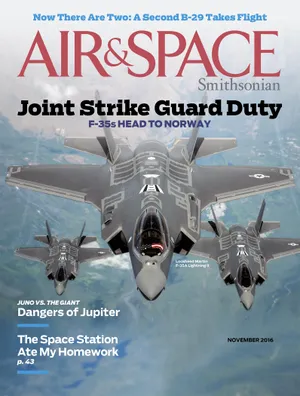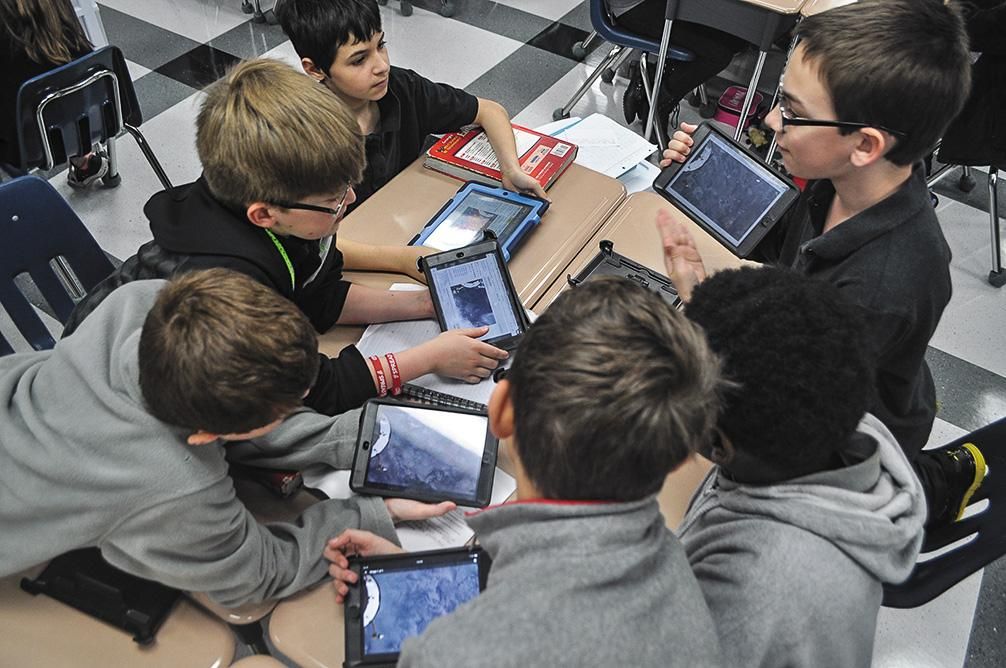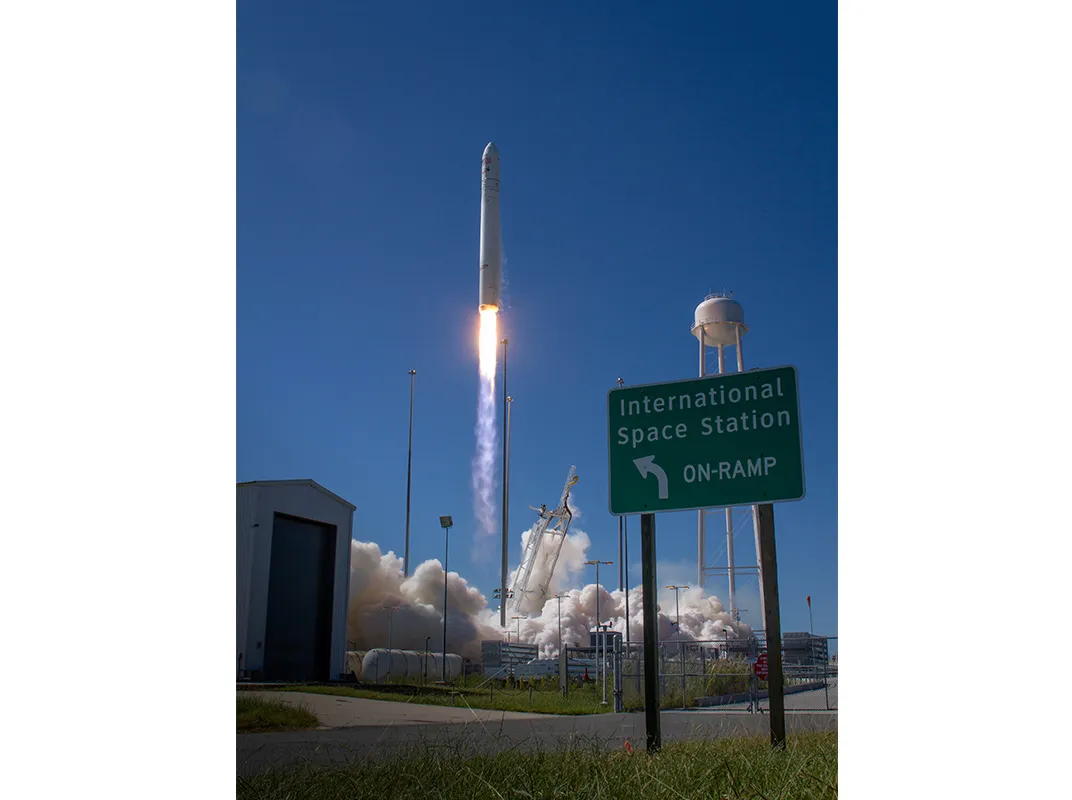Homework in Orbit
The next payload headed for the International Space Station is an 8th grader’s assignment.
:focal(1738x667:1739x668)/https://tf-cmsv2-smithsonianmag-media.s3.amazonaws.com/filer/d1/44/d14459ad-cec5-4918-9f39-77f396fe8f7a/34i_on2016_201401300001hq_live.jpg)
The cornfield-lined road dead-ends at a muddy shore, less than two miles from the launch pad. It’s the closest place you can safely watch a rocket launch at NASA’s Wallops Flight Facility, located on the Virginia isthmus that separates the Chesapeake Bay from the Atlantic Ocean. In the crowd gathered at the viewing site, a large group of scientists wait eagerly to see their experiments begin their journey to the International Space Station. They have spent months conducting research, competing in a selection process, and waiting on weather delays. Now in the sticky July heat, they splash in the water and eat cookies. Some of them are no more than 10 years old.
But scientists they are, participating in an innovative curriculum called the Student Spaceflight Experiments Program, or SSEP. This is Mission 5, one of a series involving hundreds of students in real-life space research. A few hours earlier, the kids briefed reporters on their scientific theories about what would happen to their experiments in microgravity. NASA’s head honcho, Administrator Charles Bolden, was on hand to give the students a rousing pep talk.
As they wait, SSEP founder Jeff Goldstein tromps around in the reeds, setting up a speaker system so the students, their families, and teachers can hear the countdown. No detail is too small when it comes to making the kids feel like scientists. “It’s an authentic immersive research experience,” he says of his program. The anticipation could not be more authentic. As the final countdown begins, there is a collective gasp.
**********
“We did not build the space station to do education activities,” but that became one of its purposes almost immediately, says NASA’s Camille Alleyne, who works on education programs for the space station. When the space shuttles were flying, experiments could be flown on Spacelab, but space was extremely limited and the time in orbit was short. In 2000, when the space station was ready to make science happen, educators started taking advantage of the opportunity. Since then, about 50 million students from several dozen countries have been involved in programs ranging from elementary-level, show-and-tell experiences with astronauts in orbit to post-graduate dissertations on complex microgravity experiments.
Speak with any teachers who have run space-based projects and they’ll express two seemingly contradictory ideas: (1) It’s really hard, and (2) Anyone can do it. The challenge is reconciling the realities of spaceflight with the realities of the classroom. Complicating factors like launch delays rarely work in conjunction with the academic calendar. “If something happens with a mission, as an educator who has planned for months, what do you do?” says Alleyne. But, she adds, “what they learn is real-life space operations.” Teachers also need to contend with the fact that spaceflight is unavoidably expensive: How do you produce a useful experience in financially strapped schools and amid slashed federal budgets?
Innovative educators know that if you embrace those challenges—timing and money—you can discover enormous opportunity. Sally Ride certainly did. During her two shuttle flights she discovered firsthand what you learn looking out an orbiter’s window. In 1995, she got NASA funding for a program called KidSat, which allowed students to direct photo shoots from the shuttle. In 2001, the program was renamed EarthKAM (Earth Knowledge Acquired by Middle School Students), and got a camera permanently installed on the space station. Schools apply with a list of targets and a rationale based on what they’re studying: geography, the environment, meteorology, or any number of other subjects. “Allowing [students] to direct their own inquiry makes the science engaging in a way that opens new ways of thinking, and that is a powerful, transformative experience for a young person,” says Deborah Barnhart, chief executive of the U.S. Space & Rocket Center in Huntsville, Alabama, where EarthKAM is headquartered.
Undergraduate students work at the other end of the program, conducting operations and designing imaging software. “To have experience managing and operating an ISS payload provides an incredible advantage for college students entering the workforce,” says Barnhart. Since 2001, EarthKAM has engaged more than 600,000 students in 93 countries.
One of the easier projects to set up for students involves technology that long pre-dates the space program: ham radio. Amateur Radio on the International Space Station, or ARISS, traces its roots to astronaut Owen Garriott, who enjoyed using his ham radio so much—his call sign was W5LFL—he carried a hand-held radio aboard the shuttle in 1983. Thousands of operators on the ground eagerly waited to pick up the signal from space: “Calling CQ North America. This is W5LFL in Columbia.” In 1996, amateur radio organizations from around the world decided to work together to put a permanent radio on the space station while it was under construction. “We were the first experiment activated on the station,” says Dave Taylor, one of the two delegates that manage the U.S. schools for ARISS.
Schools submit proposals for a 10-minute slot in which their students can have a conversation with an Earth-orbiting astronaut. “Many are surprised to find out that being an astronaut was often not their first career choice,” says Rosalie White, a former grade school teacher and the second U.S. delegate with Taylor. “They ask good questions about what science is going on, or how they get oxygen. But they’ll also ask, ‘Were you scared?’ ‘Do you miss your dog?’ ” Taylor remembers one student asking, “What happens when you cry?”
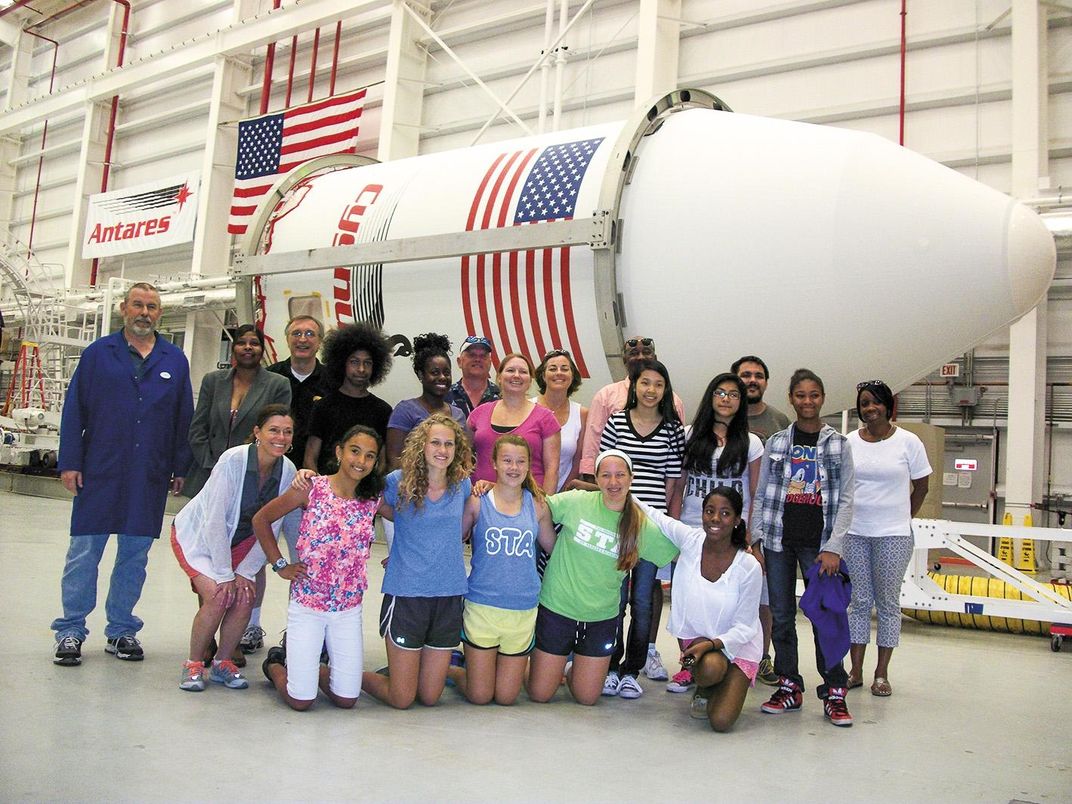
If a long-distance call with an astronaut is one end of the spectrum of educational experiences, sending actual research to be conducted in orbit is definitely the other. NanoRacks, a Texas-based company that facilitates space station research, offers services for education projects at discounted prices that range between $15,000 and $85,000—prices that can still sound astronomical to a teacher struggling for school supplies. But the programs have become so popular that NanoRacks recently spun off its education department into a partner company called DreamUp, which handles all the logistics of working with teachers to get a project from concept to launch. Carie Lemack, DreamUp’s chief executive, points out that at the low end, the price isn’t all that different from what it costs a school to mount a play. (The experiments get more expensive depending on certain factors: the use of larger, more complicated lab equipment that might need data services and power while in orbit; longer stays on station; or the requirement for a return trip to Earth, rather than an astronaut observing and transmitting the results.)
Dan Saldana is one teacher who saw value in the opportunity. He’s in charge of the space station programs at Valley Christian School in San Jose, California. In 2010, the former Lockheed engineer—“I designed classified defense department satellites”—learned about NanoRacks while exploring the idea of the school developing its own satellite. Being at a private school helped. “There’s only two people [involved] between me and the superintendent,” he says. “When I approached him about the project, he just said, ‘Let’s do it.’ ” The school launched its first experiment less than five months later.
The students use a customized Nano-Racks’ NanoLab Module, a small plastic cube that is subdivided so it can house up to four experiments, each with its own microprocessors and cameras. “It’s basically up to the students what they want to do,” says Saldana. They’ve tested the effects of microgravity on electro-plating, the functionality of Geiger counters, and the behavior of E. coli bacteria and antibiotics. The school provides all the funding for six experiments a year. Now the Valley Christian School students are mentoring other schools, including in Finland and Indonesia, and pooling resources for the experiment modules. Saldana stresses that a school doesn’t need to have Valley Christian’s resources. He points to remote Coalinga, California’s tiny Faith Christian Academy, whose total student population hovers around a few dozen. In 2012, eight of the students found mentors at the local college and worked with Valley Christian to launch an experiment studying how concrete could be mixed in microgravity.
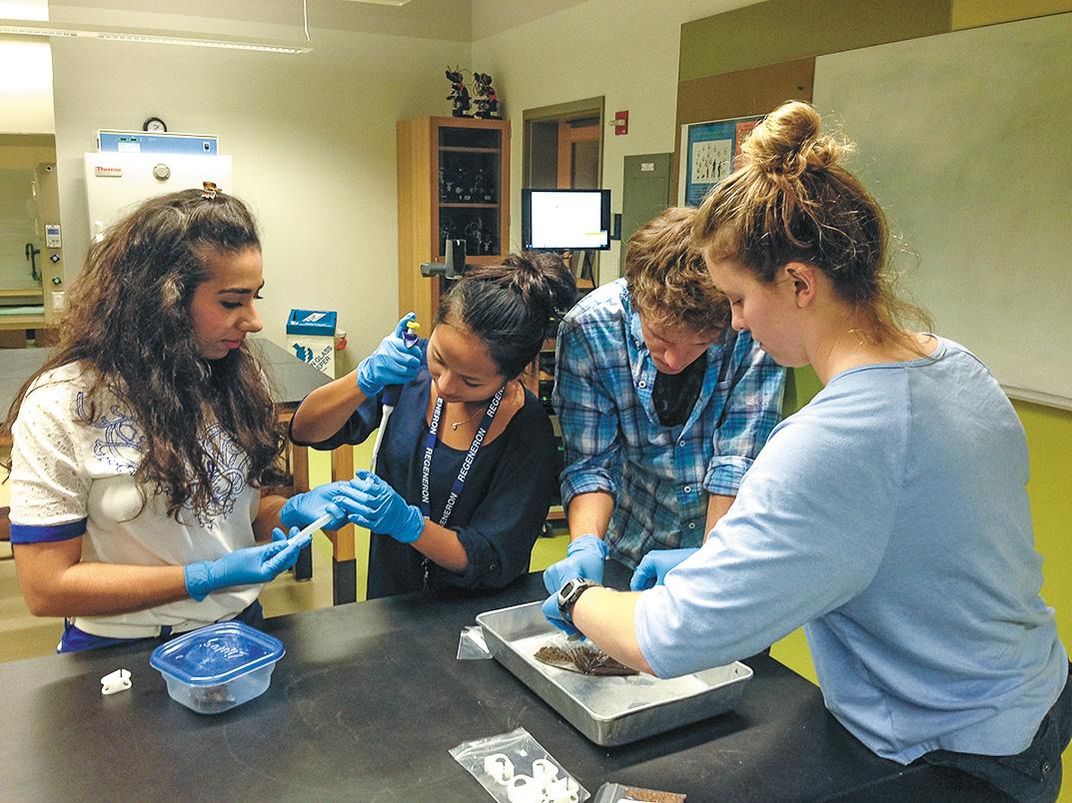
Saldana has a kindred spirit in SSEP’s Jeff Goldstein. But Goldstein has set his sights even broader, with a goal of helping as many schools as possible get an experiment on the station, and fully immersing the students in the experience. SSEP students—some as young as fifth graders—go through all the steps that any practicing scientist would, including funding the research.
In 1988, Goldstein, an astrophysicist, turned down university faculty positions to work at the National Air and Space Museum, where he stayed for nearly a decade. At the Museum, he says, “I could open a window [on science education] to children, to families, to a whole variety of groups I wouldn’t have access to as a researcher.” He used that experience with the Museum’s large audience to develop a program that he thought would have the most influence on young minds.
Goldstein started the SSEP program just in time to get student experiments up on the last two space shuttle missions. He partnered with NanoRacks for guidance, logistical support, and lab equipment. Students primarily use MixStix, which is a tube partitioned into two or three sections. They can put a wide variety of materials into the sections to study physical, chemical, and biological systems in space. The flexibility lets the teams adjust the experiments’ complexity according to the students’ grade levels.
Once up on the station, all the astronaut has to do is flex the tube to break the partition, which starts the experiment as the materials interact. The students keep an identical MixStix so they can run the experiment in Earth’s gravity and compare results with those of the space experiment.
And just like any scientist who wants access to a facility with limited space, the students must compete to get their experiment aboard a rocket headed to the station. Within each community, students are divided into teams to brainstorm experiments aimed at probing an idea that could be useful to humans, either here on Earth or in space. SSEP evaluates the projects and chooses one, which the rest of the community rallies behind. Though the price tag is hefty, it doesn’t mean only wealthy school districts can participate, says Goldstein. “We’re seeing urban, suburban, and rural communities—some are very underserved. At least 50 percent of our students are on reduced and free lunch.” SSEP offers guidance on soliciting local businesses to contribute. DreamUp’s Lemack points out the value of the students participating in the fundraising. “Obviously the price tag isn’t small,” says Lemack. “But a skill that’s so important to have throughout life is convincing others why what you’re doing is so important.” As a kid, Lemack helped pay her way for Space Camp—four times—through babysitting and local fundraising efforts. “It makes it a more complete educational experience,” she says. “Some students are going to learn more on the math side, some on the science side, some on the engineering side, and some on the communication side. Every skill is crucial to the success of the mission.” And schools that end up falling short of the goal often get help from the organization’s sponsors, including CASIS (Center for Advancement of Science in Space), the non-profit agency that manages the station’s National Laboratory.
Once the money is raised, the students must build and repeatedly test the experiment to make sure it will operate as predicted. Every summer, the kids are invited to a science conference of their peers at the National Air and Space Museum in Washington, D.C. Teams present their work, no matter where they are in the life-cycle of their research—many go back multiple times to discuss their theories and findings. They make timed presentations and take questions from members of other teams, mentors, and, of course, Goldstein. When the Museum opens, the teams stand by their posters in the Space Race gallery and explain their experiments to the public. Any adult scientist will tell you: This is the real deal.
Museum director General Jack Dailey is always there to welcome the teams and emphasize the importance of learning the scientific process. “You have a responsibility to pursue your goals, because your country needs you,” he said to the students who attended the session in July 2014. Fifth-graders Miranda Corbo, Srinidhi Raghavan, and Isabelle Utsler from Fish Hawk Elementary in Hillsborough County, Florida, were peeking into the Apollo 11 Columbia module, displayed in the gallery with them. Their experiment was going to test the germination rates of green romaine lettuce seeds. “We expect at least half of them to germinate, based on our Earth-based data so far,” said Utsler. Corbo explains the problem they’re trying to address: “Astronauts can have only fresh fruit and vegetables from the time they come up to the time they spoil, so most of the time they’re eating freeze-dried food.” Raghavan offers their potential solution: “If there’s no bacteria growth to make the astronauts sick, they might be able to eat lettuce grown in space in the future.”
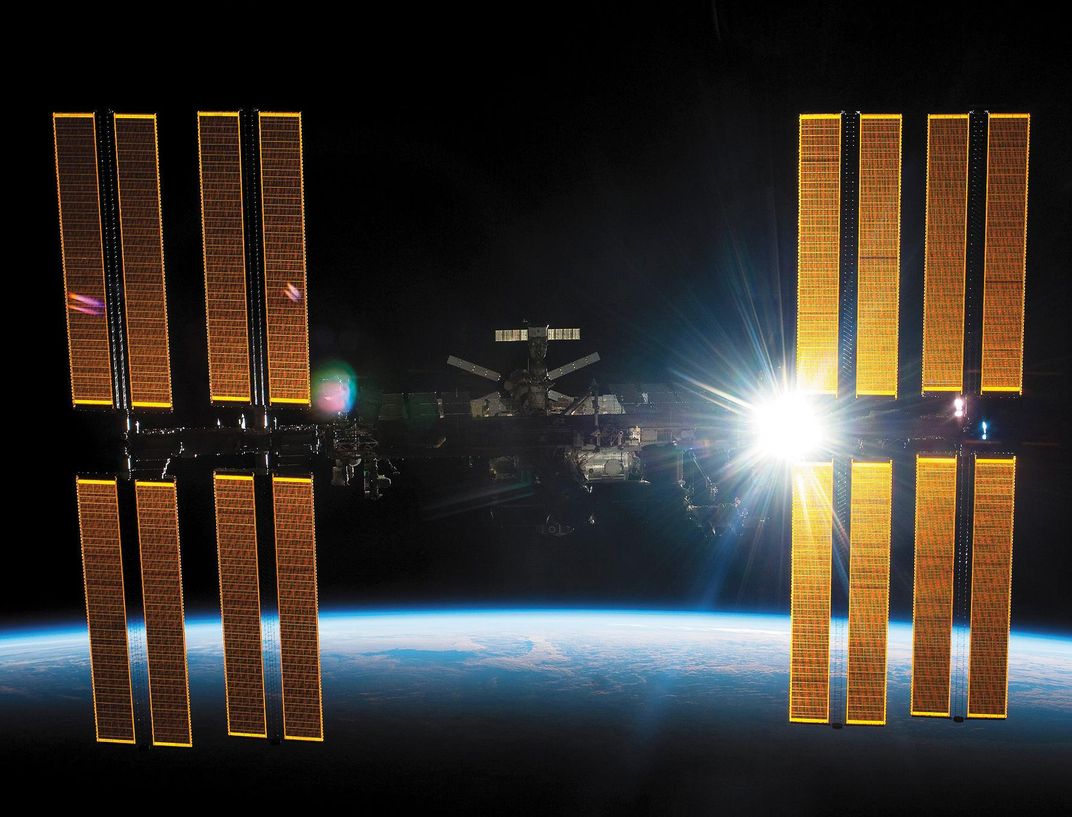
Their teacher, Mary Vaughn, called it “a phenomenal opportunity. They were able to Skype with Gioia Massa, the principal investigator for Veg-01, [an ongoing garden experiment on the space station]. She taught them a lot about seeds and how to grow them, that choosing tap water was a good idea, and she’s very interested in their results.”
Like professional scientists, the students get ideas from what’s going on around them. Motivated by a friend’s illness, a team from Tennessee created an experiment to test the reishi mushroom’s ability to fight leukemia cells. A Florida team measured the ability of enzymes to break down proteins in microgravity as a potential model for understanding and treating ALS, a neuro‑
degenerative disease, after their track coach was diagnosed with it.
When it comes to doing science in space, figuring out the experiment is one of easier challenges. Designing the payload, raising the funds, and making the presentations are, at least, all under the team’s control. But the rocket carrying all your hard work isn’t; twice so far, it has blown up seconds after liftoff. In October 2014, Mission 6 was packed on top of Orbital Sciences’ Antares launcher. Goldstein began to shout the countdown with his students at their regular Wallops Island viewing site. “The rocket ignited and started moving up, and it became clear within a few seconds that something was very wrong, because the rocket started coming down,” he says. NASA range safety officers detonated the launcher (to keep the explosion controlled), blowing up with it the Cygnus capsule carrying all the students’ experiments. To add injury to insult: “We didn’t realize it at the time, but a blast wave was heading towards us,” Goldstein says. It knocked several of the kids right off their feet. Concerned about toxic fumes, security rushed everyone to their cars to evacuate the site.
“The students were in shock,” says Goldstein. What could he tell them? “Space is hard,” he says. “What we do in the face of failure defines who we are.” Goldstein was prepared to lead by example: “Within an hour, NanoRacks was on the phone figuring out how to get the experiments on the next flight on SpaceX.” And that’s just what they did. The students got back to work, and 17 of the 18 experiments were rebuilt and launched to the space station three months later. (That one experiment that didn’t make it? The students used the opportunity to redesign it, so it had to go back through flight safety tests. The experiment went up with Mission 7 on a SpaceX Falcon 9 rocket launched on June 28, 2015. A malfunction caused that rocket to disintegrate two minutes and 19 seconds after launch. All the cargo was lost. Again. When the kids’ payload was launched last April, it finally got an uneventful ride to orbit. Space is hard indeed.)
It can be difficult to evaluate the effectiveness of space station education programs, but the few surveys NASA has conducted have shown impressive results. In 2013, the most recent assessment, 50 percent of the students who participated in EarthKAM, ARISS, or NASA-run education programs said that it increased their interest in a science or engineering career. The real test will be where the students are 10 years later, an assessment NASA is developing.
NASA likes to say that the first travelers to Mars are in middle school right now—all seven or eight of them. But while few kids will grow up to be astronauts, thousands are growing up knowing that they have the skills to use extraordinary resources to tackle the problems around them.
